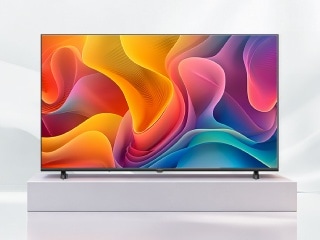- Home
- Tv
- Tv Features
- Pitch Perfect: Mobile Makers, Telcos Drawn to Hi Res Audio
Pitch Perfect: Mobile Makers, Telcos Drawn to Hi-Res Audio

Alongside are banks of dedicated digital audio players (DAPs), with an entire wall of the expo showcasing the king of DAPs: iriver.
Less than five years ago, the South Korean firm was staring at bankruptcy, its low-end MP3 players no match for Apple's iPod and the rise of the music-playing smartphone.
But, after some missteps and a name change, Astell & Kern has created a small but lucrative market for those wanting to hear music as it sounds in the studio or concert hall.
This is the world of high resolution (hi-res) audio (HRA), a niche that smartphone makers, music companies and even telecoms carriers hope will, if not move to the mainstream, at least sprinkle some of its fat margins on their bottom lines.
"Now, people are interested in $3,000 players," says James Lee, Astell & Kern's vice president. "Before, they would think $300 players were crazy. Now, $1,000 is the average price."
And that's a snip compared to the $55,000 price tag on a pair of Sennheiser Orpheus HE 1 electrostatic headphones resting on a marble-mounted amplifier on show for selected guests in a room on the hotel's 34th floor.
Consumer demand for HRA is being fed in part by lifestyle shifts. We commute longer, live in smaller apartments and use smarter phones and streaming services, like Spotify. Americans spend 24 hours a week listening to music, says market consultancy Nielsen.
Also, there are fewer constraints on audio quality. A decade ago, a 'lossy' MP3 format - where file compression meant reduced quality - made sense when $30 would buy enough space for only about 500 songs. Now, the same price would get you enough flash drive for 32,000 songs.
Audio add-ons
The growth in listening to music is having a knock-on impact on Bluetooth speakers, headphones and other audio accessories. Last year, Americans spent more on headphones for the first time than they did on physical music, such as CDs.
This has stirred hardware makers. Apple's purchase of headphones and music streaming company Beats for $3 billion in 2014 has overshadowed efforts by other manufacturers to offer audio accessories and features.
A year earlier, Sony dusted off its Walkman brand as a high-end audio range, and has since added portable speakers and headphones. Samsung Electronics has its Level series of headphones and speakers, while LG Electronics last month launched its LG phone with an optional Hi-Fi module, made in partnership with Bang & Olufsen.
Others, too, hope clearer, richer audio will help them differentiate, adding separate audio processors to improve the playback of music on their phones.
They are helped by specialist chip makers like ESS Technology Inc, whose digital audio converters are in phones made by Xiaomi, Lenovo, Meizu, LeTV and Vivo.
Telecoms carriers are also taking note, hoping to lock in users or boost revenues: Singapore Telecommunications launched a service in February offering four separate streaming apps, including Spotify.
When iriver's owners decided to sell the company in 2014, it was South Korean carrier SK Telecom which offered the most compelling bid, said Lee, adding: "Telcos think this market will grow."
Asia leads
Much of the surge in interest in HRA is in Asia.
Onkyo, a Japanese music download service, has offered hi-res music since 2004. The country accounted for more than a fifth of all spending on HRA, including home hi-fi, last year, according to GfK, a research company.
China, too, is growing fast, and overtook Japan as iriver's main market last October.
Tianjin-based Hifiman, a maker of headphones costing up to $3,000, is seeing its margins squeezed by pretenders. "Customers and distributors tell me that users get a little bit confused," said Riccardo Yeh, Hifiman's international sales director.
The HRA market still has an early-stage, almost amateur feel. The dozens of companies making headphones, from Vietnam to Romania, are usually home-spun, crowdfunded or self-financed, and rarely employ more than a few staff, says Jude Mansilla, who runs a website and organised the Singapore expo.
"The industry is very keen," says Peter Cooney, an analyst who follows the HRA space. "But for the mass market, the question is: is the demand there?"
© Thomson Reuters 2016
Catch the latest from the Consumer Electronics Show on Gadgets 360, at our CES 2026 hub.
Related Stories
- Samsung Galaxy Unpacked 2025
- ChatGPT
- Redmi Note 14 Pro+
- iPhone 16
- Apple Vision Pro
- Oneplus 12
- OnePlus Nord CE 3 Lite 5G
- iPhone 13
- Xiaomi 14 Pro
- Oppo Find N3
- Tecno Spark Go (2023)
- Realme V30
- Best Phones Under 25000
- Samsung Galaxy S24 Series
- Cryptocurrency
- iQoo 12
- Samsung Galaxy S24 Ultra
- Giottus
- Samsung Galaxy Z Flip 5
- Apple 'Scary Fast'
- Housefull 5
- GoPro Hero 12 Black Review
- Invincible Season 2
- JioGlass
- HD Ready TV
- Laptop Under 50000
- Smartwatch Under 10000
- Latest Mobile Phones
- Compare Phones
- Samsung Galaxy A07 5G
- Vivo Y500i
- OnePlus Turbo 6V
- OnePlus Turbo 6
- Itel Zeno 20 Max
- OPPO Reno 15 Pro Mini 5G
- Poco M8 Pro 5G
- Motorola Signature
- Lenovo Yoga Slim 7x (2025)
- Lenovo Yoga Slim 7a
- Realme Pad 3
- OPPO Pad Air 5
- NoiseFit Pro 6R
- Xiaomi Watch 5
- Acerpure Nitro Z Series 100-inch QLED TV
- Samsung 43 Inch LED Ultra HD (4K) Smart TV (UA43UE81AFULXL)
- Asus ROG Ally
- Nintendo Switch Lite
- Haier 1.6 Ton 5 Star Inverter Split AC (HSU19G-MZAID5BN-INV)
- Haier 1.6 Ton 5 Star Inverter Split AC (HSU19G-MZAIM5BN-INV)
















